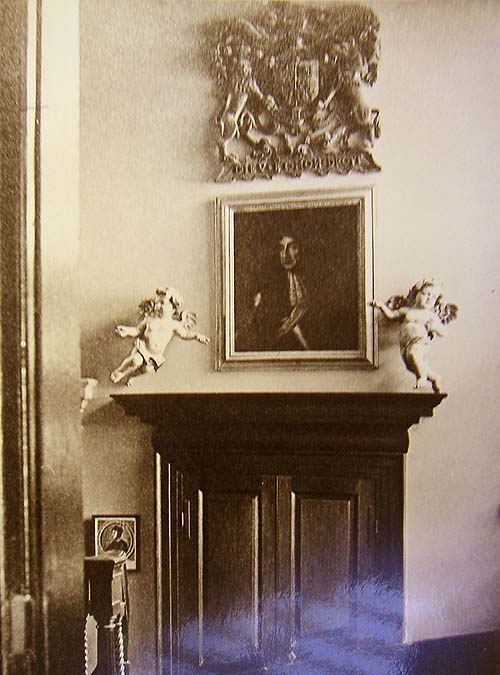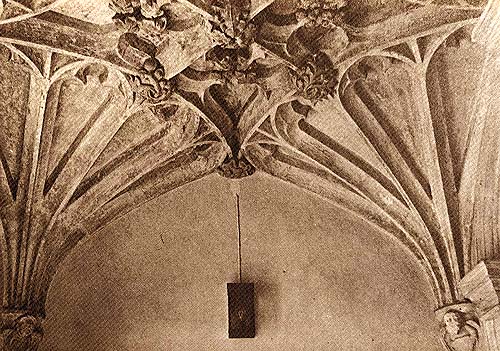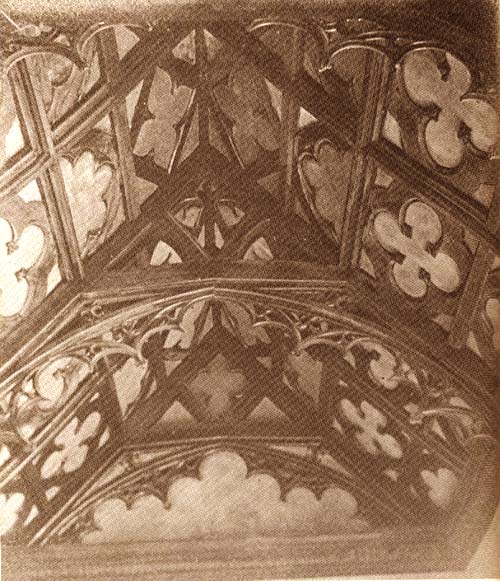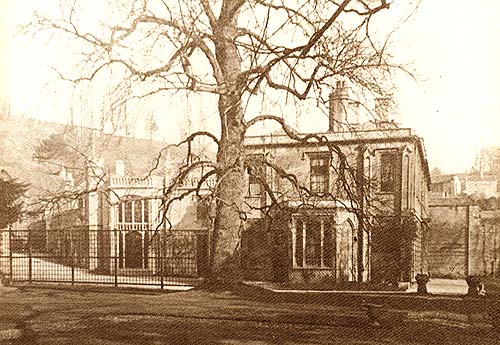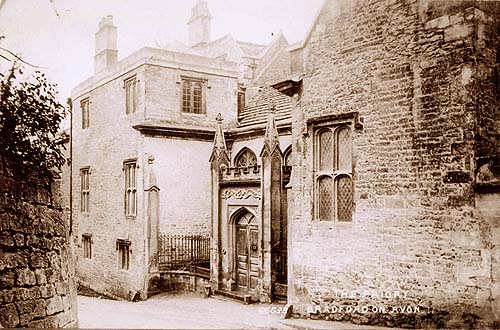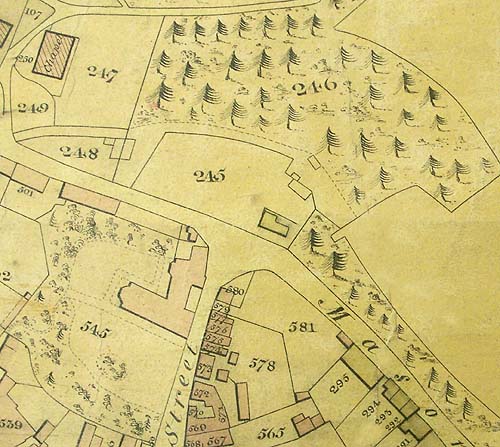The
Priory, Bradford on Avon

Or 'the Methuens', as it ought rather to be called. The nucleus of this fine old house dates probably from the 15th century and its founder was a Rogers, most likely the serjeant at law. The curious little chapel, the small vaulted parlour, and one of the two fine wooden staircases, among other portions of the building, (Mr. Parker, I believe, assigned it to the older staircase) may be of that date: the stately hall may be set to the credit of theMethuen, long its owners. The house was sold by the last proprietor of that family in 1763 to HumphreyTugwell. Mawbey Tugwell sold it about 1818 (?) to John Saunders : from him it passed through Thos. Hosier Saunders,M.A.to the late Thomas Bush Saunders, M.A., and from him to his daughter, the present owner. John Saunders built the kitchen wing. In the beautiful old music room, above the minstrel gallery, is a shield which cannot have belonged to any known proprietor, apparently ermine, two chevronels, crest an arm and hand holding an otter. It does not occur in Jackson's Aubrey There is, in the grounds, a fine, stone-built, medieval barn. On the lawn are two tulip trees of extraordinary size and beauty but not older than the nineteenth century.
trusting implicitly to the word of his friend, John Aubrey in 1660 did not himself take the trouble of looking into it. He speaks, moreover, of a large house in Pippet street, which is still standing,-" In this towne is a faire old built house of the family of Rogers of Cannington; here are many old escutcheons ; now it is the seat of Mr. Methwyn the cloathier." However, so far as any record of the house, as it then was, is concerned, Aubrey, if he even did visit it, might as well have staid away, for he says not a syllable about it. He adds further, " On the top of the North Hill above Mr. Methwyn's is the finest hermitage I have seen in England :several rooms and very neat chapel of good free-stone. This high hill is rock and gravel, faces the, south and south-west; therefore is the best site for a vineyard of any place I know ; butter in England cannot be," On the same subject in his 'Natural History of Wilts,' he says (ch. ix.) "Elders grow everywhere. At Bradford all the side of the high bill, which faces the south, above Mr. Paul Methwin's house, is covered with them. I fancy that that pent might be turned to better profit, for it is situated as well for a. vineyard as any place can be and is on a rocky gravelly ground. The apothecaries well know the use of the berries, and so does the vintners, who buy vast quantities of them in London, and some doe make no inconsiderable profit by the sale of them." All else that Aubrey relates concerning our town, besides one or two very brief notices of buildings, to which we have already referred, is contained in what he calls a " simple old woman's prophesie of old Mother Bloker of Bradford," Though he inserts it in his manuscript, yet, in a letter,1 still preserved in the Bodleian Library at Oxford, addressed to his friend Mr, (afterwards Bishop) Tanner, he says, " Pray doe me the favour to blott it out," deeming it too modern for insertion. However, here is the old dame's prediction ; it may amuse some of our readers.
" Bristowe shall sinks and Bath shall swimme, And Bradford be a Haven-towne." At present there are no signs of its accomplishment.
THOMAS ROGERS, the ' Serjeant-at-Law,' the founder of the Bradford-on-Avon branch of this family, married, on the death of Cecilia Besill his first wife, Catharine, daughter of Philip Courtenay of Powderham, Devon, and relict of Sir Thomas Pomeroy, knight. By this second wife he had two sons, each of whom left descendants, several of whom rose to distinction and kept up the ' knightly' character of their house. The youngest son, 'John,' of Sutton Valence,-called in one manuscript 'Thomas' of Kent,-had, as the pedigree shews, representatives in that county for many generations, and, amongst them, one at least attained the honor of knighthhood, The elder, George Rogers of Luppit, Devon, had a son, Sir Edward, of Cannington, who rose to be a member of the Privy Council, and Comptroller of the Household to Queen Elizabeth. Possibly it may have been he who built the large house in Pippet street, of which mention has been made (p. 58) described by Aubrey as " a faire old built house of the family of Rogers, of Cannington," and the older parts of which (for it has been very much altered in the course of successive years)seem to be of the date of the reign of Queen Elizabeth. I have seen a deed, however, in which it is recited that, in the year 1557, Henry Rogers, of Cannington, whose place in the pedigree we are not able to give with accuracy, leased a house in what is now called the Shambles, to ' John Horton' of 1 The Devises.'
This line of the ' Rogers ' family, which continued for six or seven generations, during which it numbered several knights amongst its members, terminated in Helena, daughter of Hugh Rogers, who was married to Sir Francis Popham of Littlecote, created a Knight of the Bath at the coronation of Charles II. The issue of this marriage was an only son, Alexander, who, on the decease of his father in 1674, became the representative..The latter was presented to a stall in Wells Cathedral, and to other preferment's in the County of Somerset, and was, it is believed, Chaplain to John Still,2 Bishop of Bath and Wells. He married Anne Rogers, of an ancient family of that name seated at Cannington in Somerset. Possibly through this marriage the Methuen family first became possessed of property in Bradford. The house in which for many years they lived, and which until a comparatively short time ago belonged to them and is still called ' Methuen's' by the older inhabitants, is that to which we have alluded, in a previous page, as having probably been built by one of the family of Rogers of Cannington, to whom, in the sixteenth century, the property belonged
-extract from Rev. Jones History of Bradford on Avon
